Comet Hale-Bopp adorned our night skies for 18 months, first becoming visible to the naked eye in May 1996 and finally fading from naked-eye view in December 1997.
Imagine discovering your own comet, one so bright it would go down in history as one of the most widely observed comets of the 20th century.
This may sound unlikely but, on 23 July 1995, astronomers Alan Hale and Thomas Bopp did just that. They each independently discovered comet C/1995 O1, more commonly known as Comet Hale-Bopp.
How was it discovered, did we learn anything from its visit and how do you celebrate an anniversary like this?

What is a comet?
Comets come from two areas in space: the Kuiper Belt and the Oort Cloud.
Composed of ice and rock, comets become visible when they approach the Sun and warm up.
The nucleus starts to evaporate, creating a coma, and tails of gases and dust formed by the solar wind start to appear. These can be hundreds of kilometres long.
We don’t see bright comets all that often - at least not ones observable to the naked eye - but fainter comets are quite common, and a number are discovered each year.
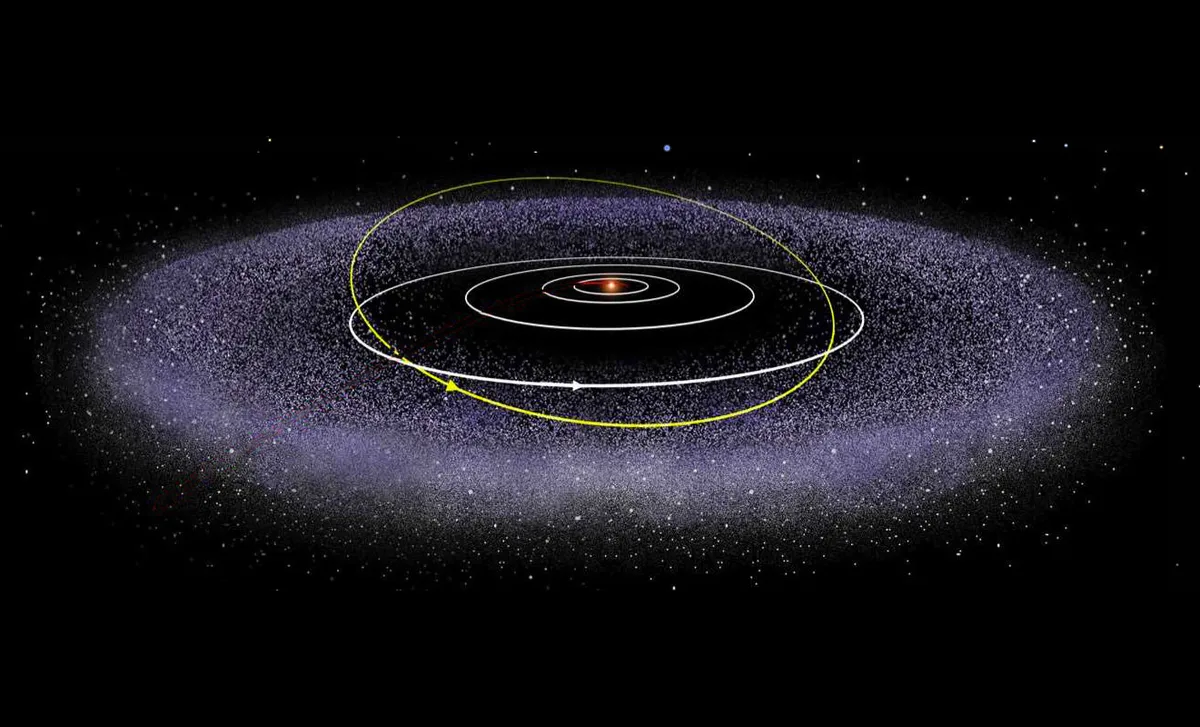
Originating from the Kuiper Belt, short period comets are relatively close to Earth.
Located between Neptune and Pluto, comets starting their journey from here can make one orbit of the Sun in less than 200 years.
Halley’s comet (1P/Halley) is famous amongst astronomers as a short period comet, and some of us may be lucky enough to see it ‘twice in a lifetime’.
We last saw the comet in 1986 and expect to see it again in 2061.
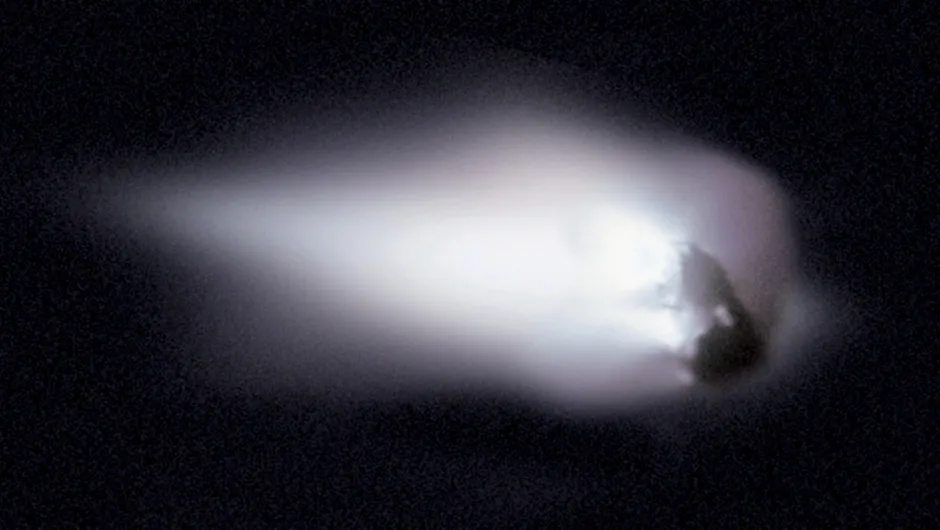
Long period comets are comets that we do not see for a very long time.
Originating from beyond Neptune in the Oort cloud, their elliptical orbits are long and they can take around 200 years, or even thousands, to orbit the Sun.
Hale-Bopp is a long period comet and we will not see it again in our lifetime. Its orbital period is huge, taking approximately 2,533 years to orbit the Sun.
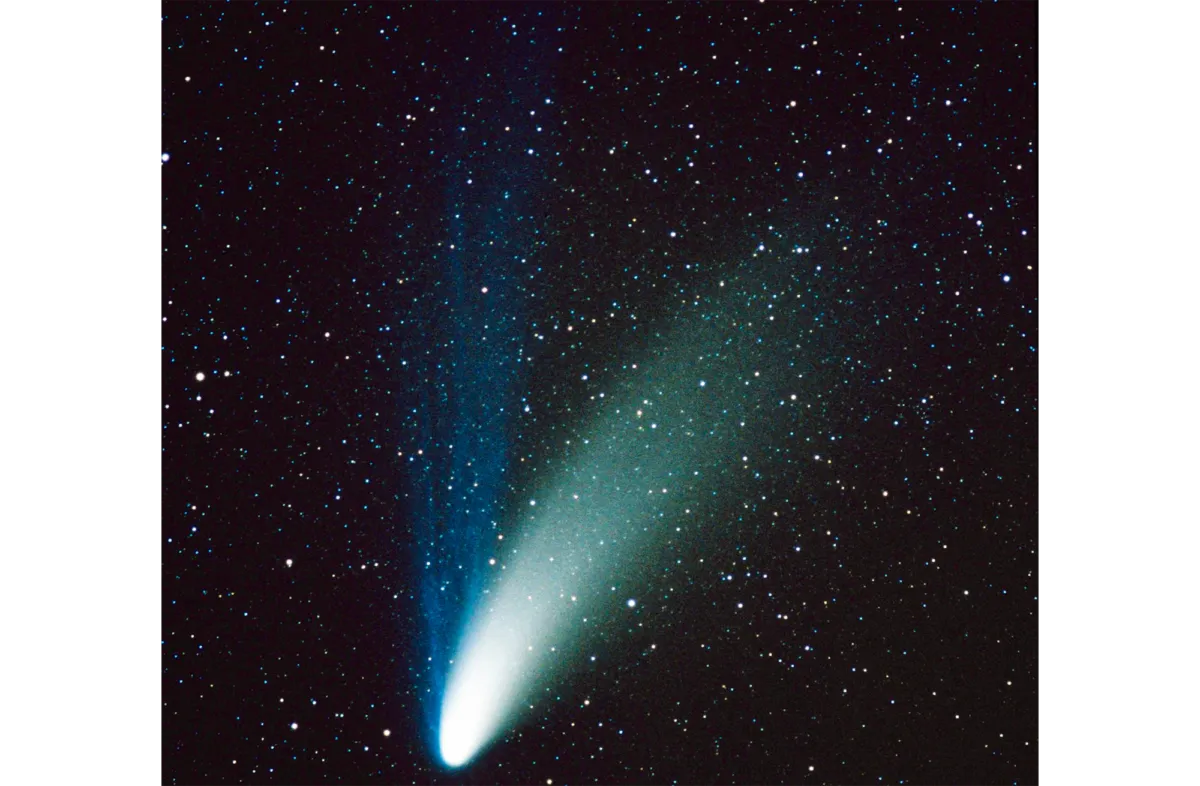
Discovering Comet Hale-Bopp
On a clear night in July 1995, Alan Hale was observing comets 71P/Clark and 6P/d’Arrest from his home in Cloudcroft, New Mexico when he made the discovery.
"I was using a 41-centimetre Meade Newtonian reflector that I had purchased second-hand a few years earlier," he tells us.
"I was passing the time waiting for 6P/d’Arrest to appear over the horizon by looking at deep-sky objects.
"When I turned the telescope to the globular star cluster M70 in Sagittarius I noticed a dimmer, fuzzy object in the same field of view."
Little did Hale know that he, alongside Thomas Bopp who was observing in neighbouring Arizona, had just discovered one of the most important comets of the century.
Following their observations, they both reported their findings and the comet’s discovery was officially announced by the International Astronomical Union on 23July 1995.
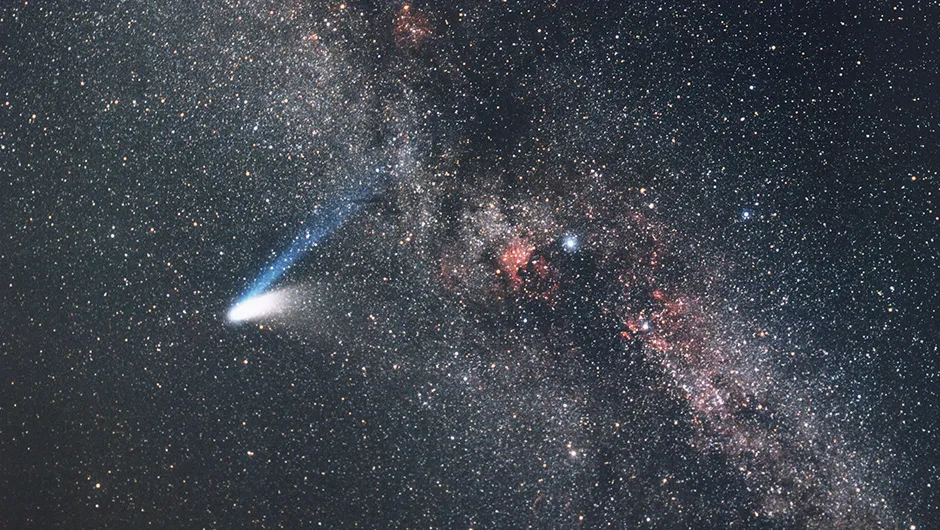
Due to the comet’s magnitude at the time of discovery and being at a distance of 7.2 astronomical units, or AU (1 AU being the average distance between the Sun and Earth), Hale was unaware of how bright the comet would become.
"I was very excited about the discovery. I had no way of knowing at the time that it would turn out to be such a bright object. It was near the ecliptic and retrograding slowly. I figured that, at best, it might be a newly found short-period comet"
The comet reached perihelion, its closest approach to the Sun (0.9 AU), on 1 April 1997. Hale-Bopp shone bright at magnitude -1, the equivalent of the star Sirius in the constellation Canis Major, and became known as the Great Comet of 1997.
Its size and orbital period explains why we saw it in our skies for such an unprecedented length of time. It eventually moved into the southern hemisphere, with the last reported naked-eye sighting in December 1997.
Hale-Bopp had a huge nucleus approximately 40-60 kilometres wide and had two beautiful prominent tails.
A third, very faint sodium tail was also observed using specialised instruments, which made Hale-Bopp unique.
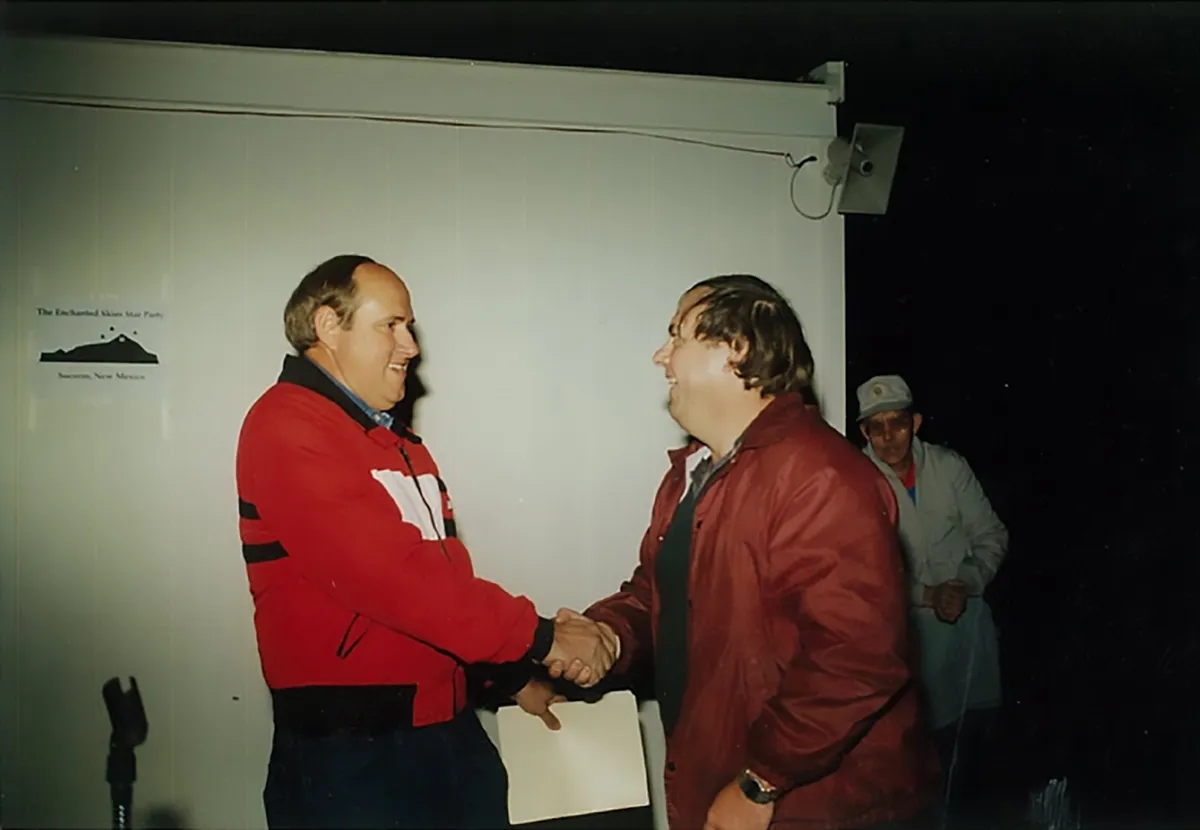
What we learnt from Hale-Bopp
As amazing as Comet Hale-Bopp is as a visual spectacle did we learn anything from it?
Comets and other small icy bodies can hold clues to origins of life and our Solar System.
Due to the length of time the comet was visible, its orbit and size, Hale-Bopp could be examined and studied for a very long time.
In February 1998, a four-day conference was held in Tenerife, Spain, dedicated to Hale-Bopp and the scientific findings obtained globally.
Scientists concluded that Hale-Bopp was approximately 4 billion years old and that it formed in the outer Solar System between Jupiter and Neptune before being flung into the Oort cloud.

Infrared spectrometers were used to research the comet's carbon monoxide:water ratio and the deuterium:hydrogen ratio, while studies were also made on its morphology and rotation period.
Hale explains that the comet also built upon our knowledge of planetary formation.
"Many of the substances identified in Hale-Bopp have also been detected in interstellar gas and dust clouds and in forming planetary disks within those clouds, so study of the comet has certainly helped fill in gaps in our knowledge about how planets form."

